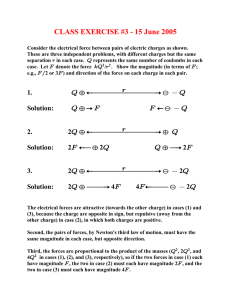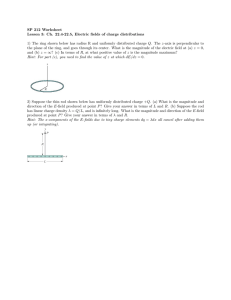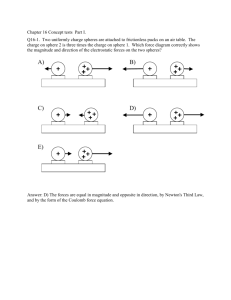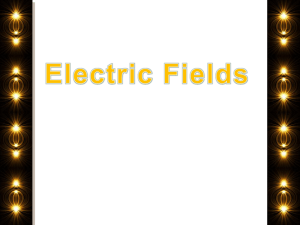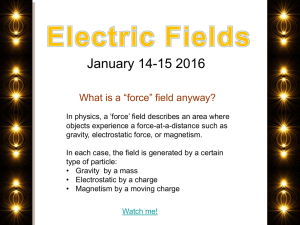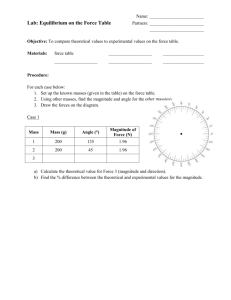PHYS 1401 Test 1 (1-4) Spring 2010 Name
advertisement
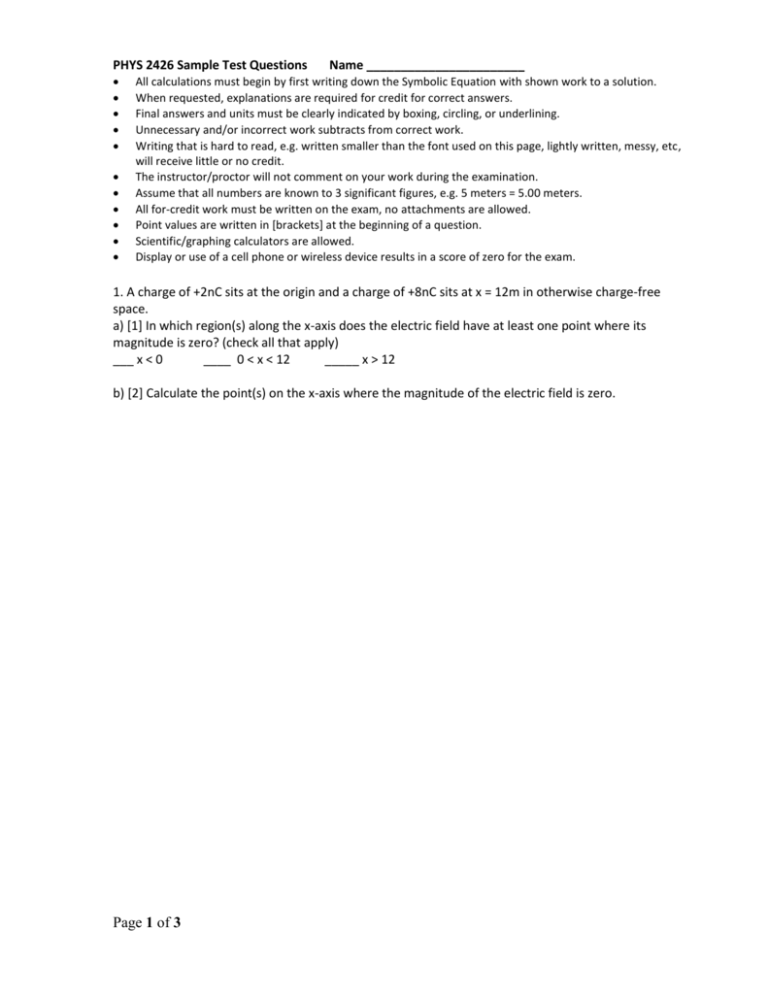
PHYS 2426 Sample Test Questions Name _______________________ All calculations must begin by first writing down the Symbolic Equation with shown work to a solution. When requested, explanations are required for credit for correct answers. Final answers and units must be clearly indicated by boxing, circling, or underlining. Unnecessary and/or incorrect work subtracts from correct work. Writing that is hard to read, e.g. written smaller than the font used on this page, lightly written, messy, etc, will receive little or no credit. The instructor/proctor will not comment on your work during the examination. Assume that all numbers are known to 3 significant figures, e.g. 5 meters = 5.00 meters. All for-credit work must be written on the exam, no attachments are allowed. Point values are written in [brackets] at the beginning of a question. Scientific/graphing calculators are allowed. Display or use of a cell phone or wireless device results in a score of zero for the exam. 1. A charge of +2nC sits at the origin and a charge of +8nC sits at x = 12m in otherwise charge-free space. a) [1] In which region(s) along the x-axis does the electric field have at least one point where its magnitude is zero? (check all that apply) ___ x < 0 ____ 0 < x < 12 _____ x > 12 b) [2] Calculate the point(s) on the x-axis where the magnitude of the electric field is zero. Page 1 of 3 2. Three charges are fixed in place as shown. The squares in the grid have sides of length s = 0.24 meters. The magnitude of Q 6 109 C and the magnitude of q 3 109 C . a) [3] Calculate the magnitude of the net force on +q due to the other two charges. b) [2] Which quadrant does the force you calculated above lie in? Q1 Q2 Q3 Q4 Circle the correct answer and explain how you know or make a calculation which justifies your answer. Page 2 of 3 3. [3] A rod of length L = 10m has a net charge of +4nC uniformly distributed on it. Calculate the y-component of the electric field at a point y = 2m directly above the right end of the rod. (You may use the exact formula or make an estimate with two charges of +2nC) 4. Point A is 1cm away from a very large sheet of charge with surface charge density of 4 10 9 C / m 2 . Point B is 2cm from the sheet of charge. a) [2] Calculate the magnitude of the electric field at point A. b) [1] How does the magnitude of the electric field at point B compare to point A? E(A) > E(B) E(A) < E(B) E(A) = E(B) Circle correct answer and explain for credit. Page 3 of 3

